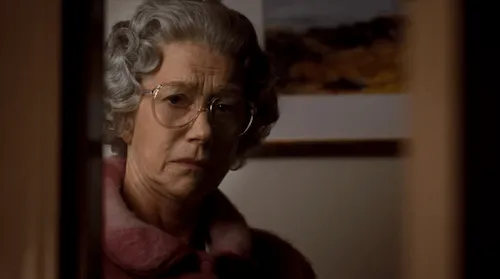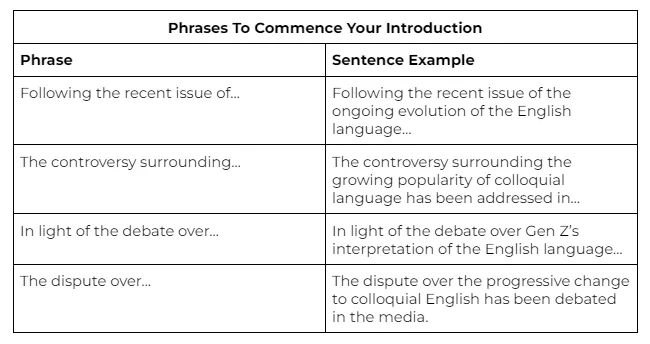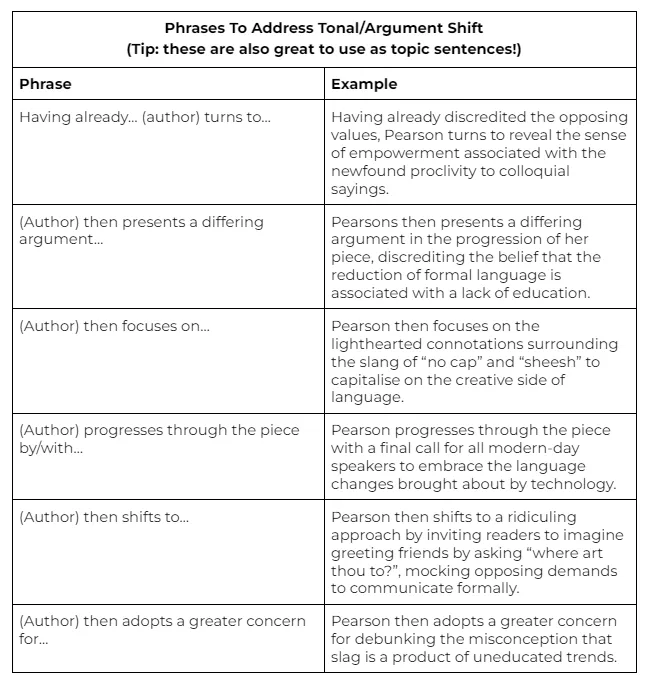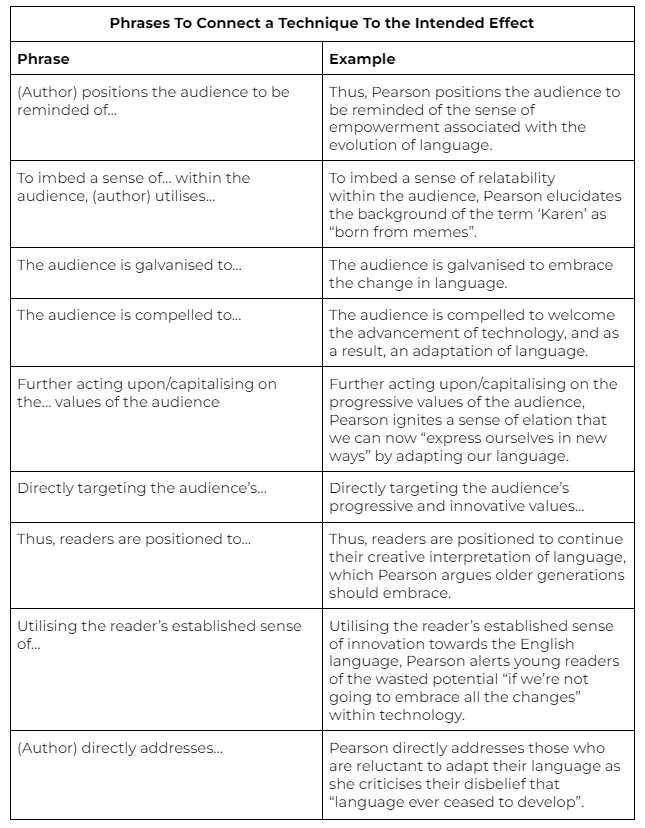Updated 30/12/2020
Contents
- What Are Quotes?
- Why Use Quotes?
- What You Want To Quote
- How Much You Want To Quote
- How That Quote Will Fit into Your Essay
- There Are Also Other Ways of Using Quotation Marks
- Questions You Must Ask Yourself When Weaving Quotes into Sentences
- How To Find Good Quotes
1. What Are Quotes?
Quotations, better known by their abbreviation ‘quotes’, are a form of evidence used in VCE essays. Using quotations in essays helps to demonstrate your knowledge of the text, and provides solid evidence for your arguments. The discussion on quotations in this study guide can be applied to all three areas of study in the VCAA English course which have been explained in detail in our Ultimate Guides to VCE Text Response, Comparative and Language Analysis.
A quotation is the repetition of a group of words taken from a text by someone other than the original author. The punctuation mark used to indicate a repetition of another author’s work is presented through quotation marks. These quotation marks are illustrated by inverted commas, either single inverted commas (‘ ’) or double inverted commas (“ ”). There is no general rule in Australia regarding which type of inverted comma you must use for quotations. Single inverted commas are preferred in Australia as they follow the British standard. The American standard involves styling quotations with the double inverted comma. You can choose either style, just be consistent in your essays.
2. Why Use Quotes?
The usage of quotations in essays demonstrates:
- Your knowledge of the text
- Credibility of your argument
- An interesting and thoughtful essay
- The strength of your writing skills.
However, quotations must be used correctly, otherwise you risk (and these frequent mistakes will be discussed in detail later):
- Irrelevant quotations
- Overcrowding or overloading of quotations
- Plagiarism
- Broken sentences
How You Integrate a Quote into an Essay Depends on Three Factors:
- What you want to quote
- How much you want to quote
- How that quote will fit into your essay.
3. What You Want To Quote
As you discuss ideas in a paragraph, quotes should be added to develop these ideas further. A quote should add insight into your argument; therefore, it is imperative that the quote you choose relates intrinsically to your discussion. This is dependent on which aspect of the text you are discussing, for example:
- Description of theme or character
- Description of event or setting
- Description of a symbol or other literary technique
Never quote just for the sake of quoting. Quotations can be irrelevant if a student merely adds in quotes as ‘sentence fillers’. Throwing in quotations just to make your essay appear more sophisticated will only be more damaging if the quotation does not adequately reinforce or expand on your contention. Conversely, an essay with no quotations will not achieve many marks either.
4. How Much You Want To Quote
A quotation should never tell the story for you. Quotations are a ‘support’ system, much like a back up for your ideas and arguments. Thus, you must be selective in how much you want to quote. Generally speaking, the absolute minimum is three quotes per paragraph but you should not overload your paragraphs either. Overcrowding your essay with too many quotations will lead to failure to develop your ideas, as well as your work appearing too convoluted for your assessor. Remember that the essay is your piece of work and should consist mainly of your own ideas and thoughts.
Single Word Quotations
The word ‘evaporates’, used to characterise money and happiness intends to instill the idea that happiness as a result of money is only temporary. (VCAA ‘Can Money Buy Happiness’ Language Analysis)
Single worded quotations can often leave the largest impression on the assessor. This is because you are able to demonstrate that you can focus on one word and develop an entire idea around it.
Phrase Quotations
Sunil Badami ‘still found it hard to tie my Indian appearance to my Australian feeling', showing that for Sunil, his culture was not Indian, but Australian due to his upbringing. (Sticks and Stones and Such-like, Sunil Badami in Growing Up Asian in Australia)
A phrase quotation is the most common quotation length you will use in essays.
Long Quotations
The multitudes of deaths surrounding Anna began to take its toll on her, burdening her with guilt as ‘sometimes, if I walked the main street of the village in the evening, I felt the press of their ghosts. I realised then that I had begun to step small and carry myself all hunched, keeping my arms at my sides and my elbows tucked, as if to leave room for them.’ (Year of Wonders, Geraldine Brooks)
Long quotations comprise of more than one sentence – avoid using them as evidence. Your assessor will not mark you highly if the bulk of your paragraphs consists of long quotations. You should aim to keep your quotations to less than 2 lines on an A4 writing page. If you have a long quotation you wish to use, be selective. Choose only the important phrases or key words, and remove the remaining sentence by replacing it with an ellipsis (…).
Here is the same example again, with the student using ellipsis:
The multitudes of deaths surrounding Anna began to take its toll on her, burdening her with guilt as she felt ‘the press of their ghosts…[and] begun to step small and carry myself all hunched…as if to leave room for them.’ (Year of Wonders, Geraldine Brooks)
In this case, we have deleted: ‘sometimes, if I walked the main street of the village in the evening’ and ‘I realised then that I had’ by using an ellipsis – a part of the quotation that is not missed because it does not represent the essence of the student’s argument. You would have noticed that a square bracket ([ ]) was used. This will be discussed in detail under Blending Quotes.
5. How That Quote Will Fit into Your Essay
Plagiarism
You must never take the original author’s words and use them in your essay without inserting them in quotation marks. Failure to do so leads to ‘plagiarism’ or cheating. Plagiarism occurs when you take someone else’s work and pass it off as your own. You must make sure that you use quotation marks whenever you use evidence from your text.
The following is plagiarism:
Even a single flicker of the eyes could be mistaken for the essential crime that contained all other crimes in itself – thought crime. (1984, George Orwell)
Using quotation marks however, avoids plagiarism:
Even ‘a single flicker of the eyes’ could be mistaken for ‘the essential crime that contained all other crimes in itself – thought crime.’ (1984, George Orwell)
There are serious consequences for plagiarism. VCAA will penalise students for plagiarism. VCAA uses statistical analysis to compare a student’s work with their General Achievement Test (GAT), and if the cross-referencing indicates that the student is achieving unexpectedly high results with their schoolwork, the student’s school will be notified and consequential actions will be taken.
Plagiarism should not be confused with:
- Paraphrasing: to reword or rephrase the author’s words
- Summarising: to give a brief statement about the author’s main points
- Quoting: to directly copy the author’s words with an indication (via quotation marks) that it is not your original work
Blending Quotations
You should always aim to interweave quotations into your sentences in order to achieve good flow and enhanced readability of your essay. Below is a good example of blending in quotations:
John Proctor deals with his own inner conflict as he is burdened with guilt and shame of his past adulterous actions. Yet during the climatic ending of the play, Proctor honours his principles as he rejects signing a false confession. This situation where Proctor is confronted to ‘sign [himself] to lies’ is a stark epiphany, for he finally acknowledges that he does have ‘some shred of goodness.’ (The Crucible, Arthur Miller)
There are three main methods in how you can blend quotations into an essay:
1. Adding Words
Broken sentences are a common mistake made when students aim to integrate quotations into their sentences. Below are examples of broken sentences due to poor integration of a quotation:
‘Solitary as an oyster’. Scrooge is illustrated as a person who is isolated in his own sphere. (A Christmas Carol, Charles Dickens)
Never write a sentence consisting of only a quotation. This does not add insight into your argument, nor does it achieve good flow or readability.
Scrooge, ‘solitary as an oyster’, is illustrated as a person who is isolated in his own sphere. (A Christmas Carol, Charles Dickens)
This example is better, however the sentence is still difficult to read. In order to blend quotations into your sentences, try adding in words that will help merge the quotation and your own words together:
Described as being as ‘solitary as an oyster’, Scrooge is illustrated as a person who is isolated in his own sphere. (A Christmas Carol, Charles Dickens)
OR
Scrooge is depicted as a person who is ‘solitary as an oyster’, illustrating that he is isolated in his own sphere. (A Christmas Carol, Charles Dickens)
Tip: If you remove the quotation marks, the sentence should still make sense.
2. Square Brackets ([ ])
These are used when you need to modify the original writer’s words so that the quotation will blend into your essay. This is usually done to:
Change Tense
Authors sometimes write in past (looked), present (look) or future tense (will look). Depending on how you approach your essay, you may choose to write with one of the three tenses. Since your tense may not always match the author’s, you will need to alter particular words.
Original sentence: ‘…puts his arm around Lewis’ shoulder’ (Cosi, Louis Nowra)
Upon seeing Lewis upset, Roy attempts to cheer him up by ‘put[ting] his arm around Lewis’ shoulder’. (Cosi, Louis Nowra)
Change Narrative Perspective
The author may write in a first (I, we), second (you) or third person (he, she, they) narrative. Since you will usually write from an outsider’s point of view, you will refer to characters in third person. Thus, it is necessary to replace first and second person pronouns with third person pronouns. Alternatively, you can replace first and second person pronouns with the character’s name.
The original sentence: ‘Only now can I recognise the scene for what it was: a confessional, a privilege that I, through selfishness and sensual addiction, failed to accept…’ (Maestro, Peter Goldsworthy)
When Keller was finally ready to share his brutal past with Paul, the latter disregarded the maestro, as he was too immersed in his own adolescent interests. However, upon reflection, Paul realises that ‘only now can [he] recognise the scene for what it was: a confessional, a privilege that [he], through selfishness and sensual addiction, failed to accept’. (Maestro, Peter Goldsworthy)
Insert Missing Words
Sometimes, it may be necessary to insert your own words in square brackets so that the quotation will be coherent when incorporated into your sentences.
The original sentence: ‘His heels glow.’ (Ransom, David Malouf)
Achilles, like Priam, feels a sense of refreshment as highlighted by ‘his heels [which] glow.’ (Ransom, David Malouf)
3. Grammar
It is important to maintain proper grammar while weaving in quotations. The question is: does the punctuation go inside or outside the final quotation mark?
The rule is: If the quoted words end with a full stop (or comma), then the full stop goes inside the quotation marks. If the quoted words do not end with a full stop, then the full stop goes outside the quotation marks.
Original sentence: 'Sagitty’s old place plus another hundred acres that went from the head waters of Darkey Creek all the way down to the river.’ (The Secret River, Kate Grenville)
Punctuation inside:
During the past decade, Thornhill became the wealthiest man in the area, owning ‘Sagitty’s old place plus another hundred acres that went from the head waters of Darkey Creek all the way down to the river.’ (The Secret River, Kate Grenville)
Punctuation outside:
During the past decade, Thornhill became the wealthiest man in the area, owning ‘Sagitty’s old place plus another hundred acres’. (The Secret River, Kate Grenville)
6. There Are Also Other Ways of Using Quotation Marks
Title of Text
When including the title of the text in an essay, use single quotation marks.
Directed by Elia Kazan, ‘On The Waterfront’ unveils the widespread corruption among longshoremen working at New Jersey docks. (On The Waterfront, Elia Kazan)
Alternatively, you can underline the title of the text instead of using single quotation marks. Many teachers and examiners prefer this option.
Quotation Within a Quotation
When you quote the author who is quoting someone else, then you will need to switch between single and double quotation marks. You firstly need to enclose the author’s words in single quotation marks, and then enclose the words they quote in double quotation marks. If you're following the American standard, you'll need to do this the opposite way - that is, using double quotation marks for the author's words and and then single quotation marks for the quote. We recommend sticking to the preferred Australian style though, which is single and then double.
Original sentence: ‘…something bitter and stringy, too difficult to swallow. “It’s just that – I – um, I hate it…It’s too – it’s too Indian!”’ (Sticks and Stones and Such-like, Sunil Badami in Growing Up Asian in Australia)
Sunil’s unusual name leads him to believe that it is ‘…something bitter and stringy, too difficult to swallow. “It’s just that – I – um, I hate it…It’s too – it’s too Indian!”’ (Sticks and Stones and Such-like, Sunil Badami in Growing Up Asian in Australia)
As you can see, the student has quoted the author’s words in single quotation marks. The dialogue used by the author is surrounded by double quotation marks. This demonstrates that the dialogue used in the text still belongs to the author.
Using Quotations to Express Irony
When you wish to express irony, you use quotation marks to illustrate that the implied meaning of the actual word or phrase is different to the normal meaning.
As a young girl, Elaine is a victim of Mrs Smeath and her so called ‘friends’. Her father’s interest in insects and her mother’s lack of housework presents Elaine as an easy bullying target for other girls her age who are fit to fulfill Toronto’s social norms. (Cat’s Eye, Margaret Atwood)
In this case, ‘friends’ is written in inverted commas to indicate that Elaine’s peers are not truly her friends but are in fact, bullies.
7. Questions You Must Ask Yourself When Weaving Quotes into Sentences
1. Does the quote blend into my sentence?
2. Does my sentence still make sense?
3. Is it too convoluted for my readers to understand?
4. Did I use the correct grammar?
8. How To Find Good Quotes
Tip One: Do not go onto Google and type in 'Good quotes for X text', because this is not going to work. These type of quotes are generally the most famous and the most popular quotes because, yes they are good quotes, but does that necessarily mean that it's going to be a good quote in your essay? Probably not. But why? Well, it's because these quotes are the most likely to be overused by students - absolutely every single person who has studied this text before you, and probably every single person who will study this text after you. You want to be unique and original. So, how are you going to find those 'good quotes'? Recognise which quotes are constantly being used and blacklist them. Quotes are constantly used in study guides are generally the ones that will be overused by students. Once you eliminate these quotes, you can then go on to find potentially more subtle quotes that are just as good as the more popular or famous ones.
Tip Two: Re-read the book. There is nothing wrong with you going ahead and finding your own quotes. You don't need to find quotes that already exist online or in study guides. Go and find whatever gels with you and whatever you feel like has a lot of meaning to it. I had a friend back in high school who was studying a book by Charles Dickens. I haven't read the book myself, but there was a character who couldn't pronounce the letter S, or he had a lisp of some sort. What my friend did was he found this one word where, throughout the entire book, the guy with the lisp only ever said the S one time and that was a massive thing. So, he used that. This is something that is really unique and original. So, go ahead and try to find your own quotes.
Tip Three: Realise that good quotes do not necessarily have to come from the main character. Yes, the main character does often have good quotes associated with whatever they're saying, but just know that you do have minor characters who can say something really relevant and have a really good point too. Their quote is going to be just as strong in your essay as a main character's quote, which will probably be overused and overdone by so many other students.
Tip Four: Develop a new interpretation of a famous or popular quote. Most of the time, the really popular quotes are analysed in very much the same way. But if you can offer a new insight into why it's being said or offer a different interpretation, then this is automatically going to create a really good quote that's going to offer a refreshing point of view.
For example, if we look at The Great Gatsby, one of the most famous quotes that is constantly being used is, 'He found what a grotesque thing a rose is and how raw the sunlight was upon the scarcely created grass.' What most people will do is they will analyse the part about the 'grotesque thing a rose', because that's the most significant part of the quote that stands out. But what you could do instead, is focus on a section of that quote, for example the 'raw'. Why is the word raw being used? How does the word raw contribute extra meaning to this particular quote? This way you're honing in on a particular section of the quote and really trying to offer something new. This automatically allows you to investigate the quote in a new light.
Tip Five: Just remember that the best quotes do not have to be one sentence long. Some of the best quotes tend to be really short phrases or even just one particular word. Teachers actually love it when you can get rid of the excess words that are unnecessary in the sentence, and just hone in on a particular phrase or a particular word to offer an analysis. And also, that way, when you spend so much time analysing and offering insight into such a short phrase or one sentence, it shows how knowledgeable you are about the text and that you don't need to rely on lots and lots of evidence in order to prove your point.
Those are my five quick tips on how to find good quotes from your texts!
Need more help with quotes? Learn about 5 Ways You're Using Quotes Wrong.
Resources for texts mentioned/referenced in this blog post:
Comparing: Stasiland and 1984 Study Guide
A Killer Text Guide: Cosi (ebook)
Cosi By Louis Nowra Study Guide
Growing Up Asian in Australia Study Guide
A Killer Text Guide: On the Waterfront (ebook)
A Killer Text Guide: Ransom (ebook)
The Crucible by Arthur Miller Study Guide
A Killer Text Guide: The Crucible (ebook)
The Crucible and Year of Wonders Prompts
Comparing: The Crucible and Year of Wonders Study Guide
















.jpg)